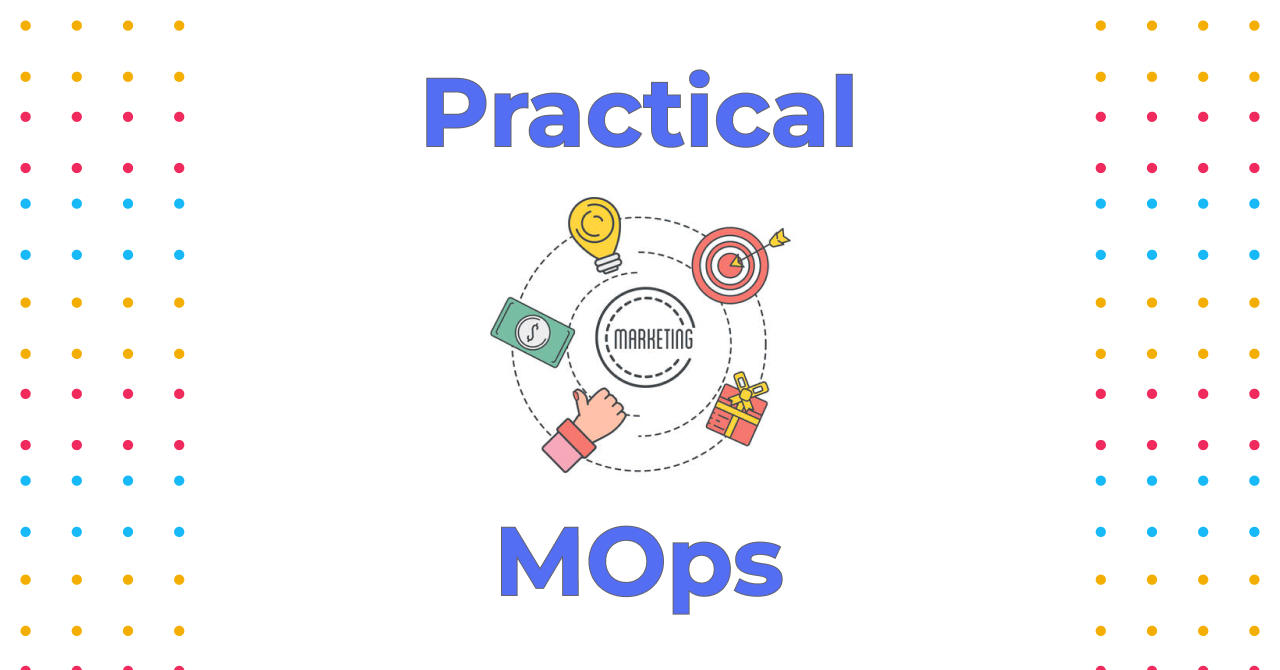Practical MOps: no buzzwords, I promise

Buzzwords! They get popular because they sound clever, get used by the dumbest guy in a meeting to sound clever, and then steadily begin to lose all meaning.
The sad thing is that most buzzwords become buzzy in the first place because they are, in fact, expressing something useful or new. It’s important not to throw the baby out with the bathwater when your eyes glaze over and your brain turns into a 90s screensaver when you hear a buzzword; you might be missing out on a useful nugget of information.
With that said:
What are Marketing Operations (MOps)?
The main goal of MOps is to define the processes of marketing activities within a marketing team and take firm responsibility for the operation of those processes.
Sounds buzzword-y, doesn’t it? But it makes sense.
Where a marketing role is (broadly) responsible for planning and implementing measures to effectively communicate the value of the company and its products to the target audience, MOps personnel are part of the marketing organization, but do not plan or actually implement initiatives.
Instead they focus on improving the efficiency of field marketers, who are responsible for generating sales leads, by improving the planning and operation of marketing initiatives.
It’s kind of the perfect term to become a buzzword, isn’t it? It’s a suitably vague but very good idea.
In this article we’re going to un-buzzword MOps by going over two main areas and breaking them down into actionable steps:
- what problems does MOps address, and
- what practical steps can we take to enact MOps in your team?
Part 1: What does MOps address?
There are three big ones — see if any of these sound familiar to your marketing team:
Issue 1: The proliferation of tasks to the point task management becomes (or at least feels) impossible
Marketing initiatives involve multiple steps. Planning, creativity, review, tool setting, implementation, effectiveness verification, and improvement reviews are some obvious ones, and even those are a bit vague — ‘creativity’ could mean an afternoon assembling your existing copy into spec for the current project, or it could mean months of work with a graphic design team. Even if each step itself does not require that many man-hours, the work queue and workflow can cause problems in managing the project as a whole.
Issue 2: Implementing tasks becomes an end in itself
Once the project starts to revolve around KPI, the KPI can become the goal rather than an indicator of progress towards the true goal of the project. Like a snake eating its own tail, the team focuses on the work rather than the results. This can lead to a team being seemingly very busy without achieving anything of note. When this happens at the management level, marketing initiatives are implemented that are not linked to customer value.
In particular, staff joining a project midway — thus missing on the planning stages — inevitably follow the short-term indicators they are given and can easily see results from.
Issue 3: Data integration and toolsets require engineers and thus wait times
Data from various sources needs to be integrated in order to get an overall picture of the customer or to verify the effectiveness of marketing initiatives. However, engineers must be asked to do almost all of this, so every time a tool is added or the amount of data required increases, wait times and man-hours increase exponentially.
Part 2: Building MOps
Let’s go through the issues above one-by-one, and go over practical solutions for equipping managers and setting up project management to alleviate them.
Issue 1:
It is important that right from the beginning, we set up a marketing operation management role separate to the manager in charge of direction and general affairs. This person fills the role of managing the marketing calendar, ticket management, keeping the creative and implementation process on track, organizing meetings, etc.
This separates management of the marketing itself and management of the team, allowing everyone to concentrate on their tasks safe in the knowledge that they are heading in the right direction with a competent hand is on the tiller.
If the team is small, this manager would of course be responsible for other marketing tasks as well, but clarifying the role is effective in reducing rudimentary mistakes.
Issue 2:
Ensure that managers not only align the team once, but also regularly go over the customer journey map and disseminate it throughout the team in a workshop format.
We should also standardize the onboarding process for members joining the team midway through the project to ensure all are working on marketing activities with a common understanding.
Issue 3:
Instead of asking engineers to carry out all the processes of data management, it is now possible to build an environment in which marketing personnel can carry out the processes of integrating, organizing, and analyzing data by themselves.
Data integration with storage and analytics tools such as Snowflake and SaaS tools such as mailchimp and Hubspot can be directly linked to company databases, allowing marketing staff to access and parse the data they require. Admittedly it will require an engineer or two to set up, but once it’s running it should be relatively accessible to non-technical staff.
However, this MOps case study is an excellent representative of why we built Morph in the first place. Rather than relying on multiple tools and engineers to set up the data pipeline, Morph allows non-technical users to integrate existing data sources such as spreadsheets and databases, analyze and visualize that data with AI assistance, before finally disseminating the results via a shareable dashboard.
Morph is available for free individual use, or as a fee trial for teams. Why not give some of our features a try to see if they would boost the MOps in your own organization?